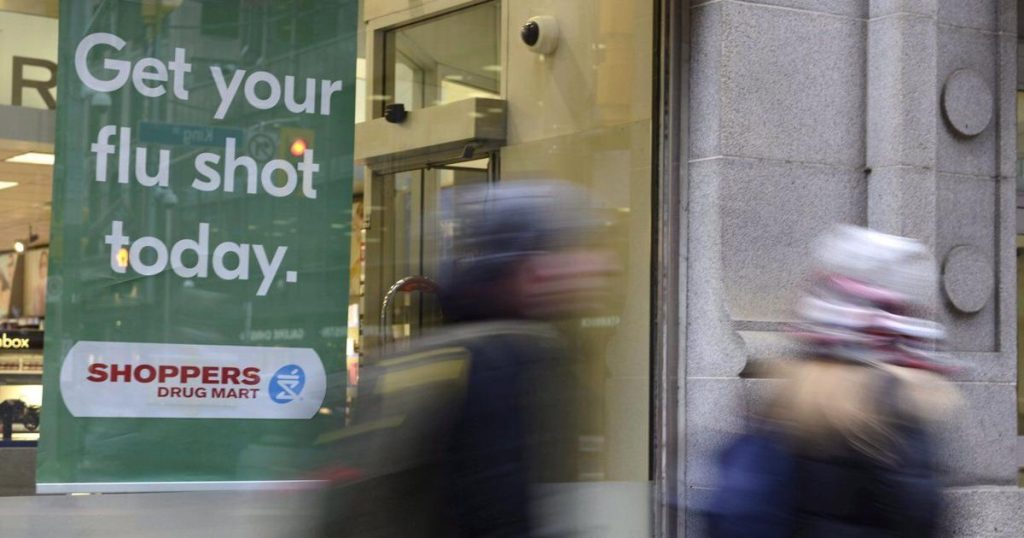Listen to the article
British Columbia health officials launched their annual fall vaccination campaign this week, while simultaneously addressing concerns about the spread of misinformation regarding vaccine safety.
Provincial Health Officer Dr. Bonnie Henry emphasized during a news conference that influenza and COVID-19 vaccines have undergone rigorous testing and continue to be monitored for safety. She acknowledged the challenges posed by deliberate misinformation campaigns that have fostered vaccine hesitancy among some residents.
“We continue to see misinformation out there, deliberate misinformation, to try and scare people away from using these important tools,” Dr. Henry said. “There’s good information out there, but there’s also a lot of misinformation that is deliberately trying to scare people.”
The vaccination campaign, which began Monday, is offering updated vaccines designed to protect against circulating variants of both influenza and COVID-19. Health Minister Adrian Dix reported that nearly 60,000 people had already received their influenza shots by Tuesday afternoon, with 1.3 million doses of flu vaccine currently available throughout the province.
Officials are recommending vaccinations particularly for high-risk populations, including those aged 65 and older, individuals with chronic health conditions, pregnant women, and children between six months and five years old. Healthcare workers are also prioritized for immunization.
Dr. Henry addressed the timing of this year’s campaign, explaining that the province aligned the rollout with when respiratory illnesses typically begin circulating in British Columbia. The schedule also considers when vaccine protection is most effective, which typically peaks about two weeks after immunization and remains strong for approximately six months.
British Columbia’s approach comes as respiratory illness season approaches, with health authorities preparing for potential simultaneous circulation of influenza, COVID-19, and respiratory syncytial virus (RSV). Last winter, the province experienced significant strain on its healthcare system due to the triple threat of these respiratory viruses, leading to overcrowded emergency departments and extended wait times for patients.
The vaccination effort represents part of a broader provincial strategy to mitigate the impact of respiratory illness season on the healthcare system, which continues to face staffing shortages and capacity challenges in many regions.
Health officials emphasized that vaccination remains one of the most effective tools for preventing severe illness, hospitalization, and death from respiratory viruses. They also reminded residents of complementary prevention measures, including staying home when sick, practicing good hand hygiene, and considering mask use in crowded indoor settings, particularly for vulnerable individuals.
The province has implemented a coordinated appointment booking system through its Get Vaccinated service, allowing residents to schedule both influenza and COVID-19 vaccinations simultaneously. Many pharmacies and community clinics throughout British Columbia are offering the vaccines.
Dr. Henry also addressed concerns about declining vaccination rates in recent years, noting that trust in vaccines has been eroded partly due to targeted misinformation campaigns on social media platforms. She encouraged residents to seek information from reliable sources, including healthcare providers and official public health websites.
“These vaccines have been given to millions of people around the world and continue to be monitored for safety,” Dr. Henry emphasized. “The benefits far outweigh any potential risks.”
As part of the province’s commitment to transparent communication, health officials plan to release weekly surveillance data tracking respiratory virus activity throughout the fall and winter seasons. This information will help residents understand current risk levels and make informed decisions about preventive measures.
The vaccination campaign is expected to continue through the winter months, with health officials monitoring uptake rates and adjusting outreach strategies as needed to ensure broad population protection.
Verify This Yourself
Use these professional tools to fact-check and investigate claims independently
Reverse Image Search
Check if this image has been used elsewhere or in different contexts
Ask Our AI About This Claim
Get instant answers with web-powered AI analysis
Related Fact-Checks
See what other fact-checkers have said about similar claims
Want More Verification Tools?
Access our full suite of professional disinformation monitoring and investigation tools



